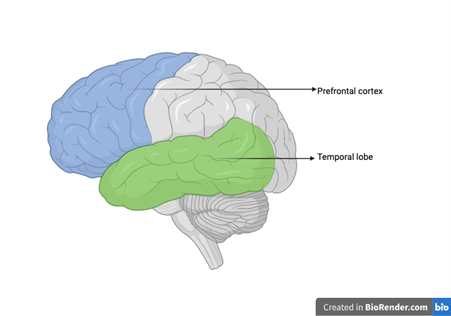This post is also available in Dutch.
Making people laugh is a very serious job. Humour can be crafted for all situations and societies. Yet, those who create humour regularly are nothing less than magicians. This is because it requires a combination of precise timing, astute observation, the risk of offending the audience, and an understanding of context, background, mental states, and more to land the perfect joke. So what happens in our brains when we are creating or conceiving a joke?
Neuroscience of Humour.
Research using neuroimaging data shows that the prefrontal cortex (used for reasoning) and the temporal lobe (used for auditory processing) are the two most active areas while creating jokes . What is more surprising is that some studies show that the funnier a joke is, the less active the prefrontal cortex is while creating it. This supports the popular claim that we are funnier when we are not necessarily trying to be funny. Furthermore, the more experienced a comedian is, the more active their temporal lobe is while producing a joke. The temporal lobe is a place where the brain collects most of the sensory data and so helps in understanding the context of the situation. Thus, more experienced comedians are usually good at assessing the situation and improvising their jokes accordingly. The temporal lobe is also active when we perceive a joke. Studies also show, that the junction between the temporal, occipital, and parietal lobes is particularly active while conceiving a joke. This area helps in identifying and resolving incongruities, like hearing something we don’t expect to hear.

Theories of Humour.
Humour has been a part of social interaction since its advent, and humans have often wondered what makes a joke funny. In ancient times, Plato linked humour to aggression. Building on this, the superiority theory claims humour stems from feeling superior. Another classical theory, called the relief theory, suggests that humour is a way of releasing built-up tension in uncomfortable and tense situations. The benign-violation theory is more contemporary and general. It states that a joke or situation is funny if it adheres to three criteria. Firstly, an expected norm is violated, for instance, a major car crash. Secondly, the violation is harmless, like the crash occurring in a video game. Finally, both the violation and realization of its harmlessness occur simultaneously, for instance, when you play a car racing video game with a friend, and instead of focusing on the race, you focus on crashing into each other, making the experience funny. This theory also specializes in flagging “dad jokes“. For instance, “a doctoral candidate should not eat an apple because an apple a day keeps the doctor away.” This joke highlights clever wordplay but does not violate the norm of keeping the doctor away by eating an apple; thus, it is not funny according to the benign-violation theory.
Explaining a joke again and again can be a boring activity but explaining why it was funny or not funny is a very interesting research area from the point of view of neuroscience and psychology. Hopefully, this article gave you a summary of the same, if not, then maybe a reason to admire the temporal lobe of the person who makes you laugh without trying too hard.
Credits
Author: Siddharth Chaturvedi
Buddy: Helena Olraun
Editor: Vivek Sharma
Translator: Eline de Boer
Editor translation: Dirk-Jan Melssen
